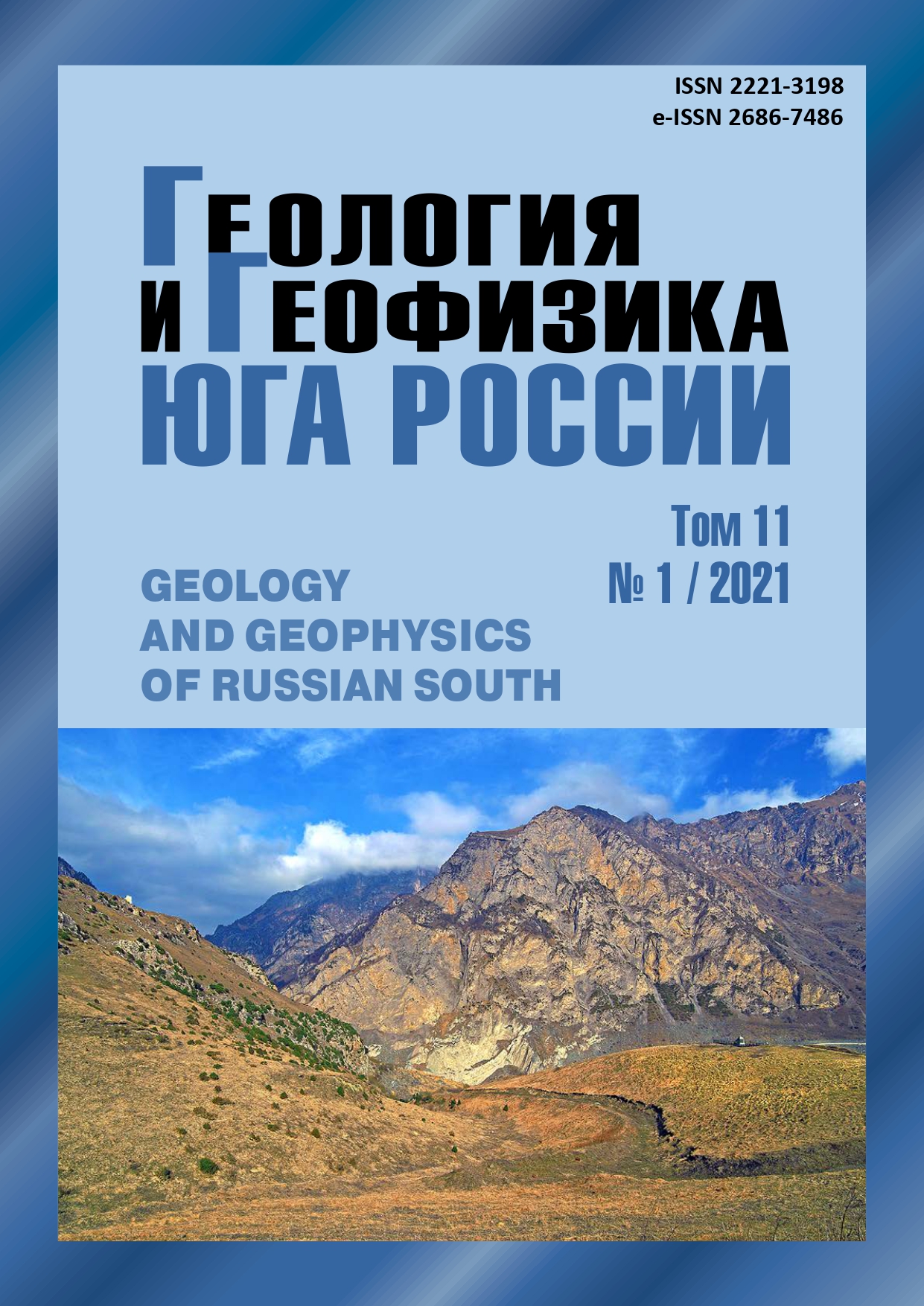Substantiation of the main concepts for the deformation model of the crustal earthquake source preparation
Abstract
Relevance. The article reasonably shows that the uppermost layer of the Earth’s crust up to 25 kilometers is seismogenic. Aim. The article provides the evidence that crustal seismicity is generated not by regional stress fields of a homogeneous shear, as it was adopted in the strategy for solving the problem of earthquake forecast, but by local fields of exponential elastic stress. Such fields arise in one or another section of a seismogenic fault due to the occurrence of a stress concentrator in this section. According to the Saint Venant principle, such a stress concentrator (an additional load in the system) generates a local stress field of an exponential form. In this field the maximum stress is localized in the areas of an increment load application (in the fault) and decreases very quickly (exponentially) on both sides of the fault. Such stress concentrators arise in those areas of a seismogenic fault, where displacements along the fault stop due to various reasons. G. A. Gamburtsev foresaw this situation and very precisely called such concentrators as “seams”. The origin of a local stress field at the place, where a seam appears, is caused by the following fact: the power impulse generated by the seam is small compared to the linear momentum of the entire system of blocks of the considered fault and, therefore, it will stop the displacement of blocks only within the seam; but the displacements of blocks outside the seam will continue in the same mode. One can single out the following reasons causing stress concentrators in the fault: variations in different stress fields, changing the value of the friction coefficient in the fault; variations in fluid processes; the influence of temperature and pressure; mechanical “hooks” of blocks due to irregularities of their contacting surfaces, etc. Methods. The fact of the existence of the considered local stress fields is confirmed by geodetic studies, i. e. the results of repeated geodetic measurements in the epicentral zones of strong earthquakes. Results. These results allow drawing the following conclusions: 1) the sign of the preparation of a crustal earthquake source was reliably determined. This sign means the increasing deformation of the elastic bending of rocks in the source in the course of time; 2) from the standpoint of solving the problem of earthquake forecast, the main and decisive result of these studies is that the deformation processes occurring in the impending source also capture the Earth’s surface, because this is precisely what opens up great opportunities in solving this problem; 3) with the help of special geodetic systems (forecast profiles), one can detect the places of the impending earthquake source preparation, i. e. make an accurate forecast of the site of a future earthquake; 4) since the energy of the earthquake source is functionally related to its size, one can realize the correct prediction of the maximum possible intensity of the future earthquake by determining the length of the seismogenic fault section, elastically deformed by the preparation of the earthquake using the forecast profiles.


